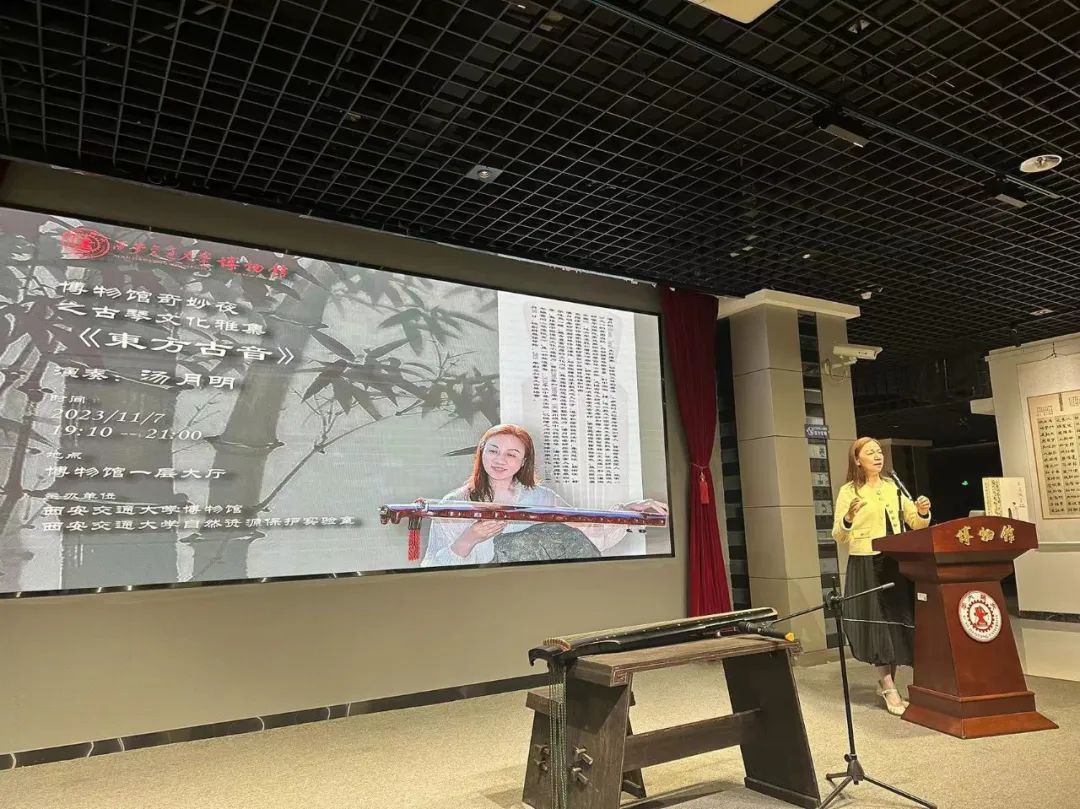2023 Guqin Lecture Tour

University of Toronto
The concluding months of 2023 proved to be both challenging and fulfilling for me. I was honored to receive invitations from various universities worldwide to deliver lectures on guqin.
My inaugural presentation took place in October in my cherished home country at the University of Toronto, a highly esteemed Canadian institution situated in the country’s most populous city. The Faculty of Arts and Science at the St. George campus stands as the largest academic organization within the university.
 Faculty of Music at the University of Toronto
Faculty of Music at the University of TorontoThe speaking engagement, titled “Searching For Traces of Ancient Sounds & Tea Routes (尋跡古音),” was part of the Chinese Cultural Event Series. I was delighted to provide an overview of the guqin’s early history and explore its developmental journey through the annals of time, all while endeavoring to immerse my audience in the expansive and ancient cultural realm of Chinese literati.
No guqin lecture would be complete without the performance of a classical piece or two. During this event, I played the timeless classics “Drunken Joy” (酒狂) and “Three Stanzas on Plum Blossoms” (梅花三弄)….
No guqin lecture would be complete without the performance of a classical piece or two. During this event, I played the timeless classics “Drunken Joy” (酒狂) and “Three Stanzas on Plum Blossoms” (梅花三弄)….
And a poem to commemorate this joyful occasion.
尋跡古韻有知音
校園秋風拂舊塵
葉黃盡染芬芳妙
多大賢生聚滿堂
趣在傳承半句吟
醉談歷史論彈琴
My first stop on the other side of the Pacific led me to the ancient cultural city of Dun Huang in Gansu Province, China. The hosting institution, Dunhuang College of Northwest Normal University, is a modern campus established since 2014.

Dunhuang College of Northwest Normal University
Titled “Searching for Traces of Dunhuang’s Ancient Sounds,” my presentation touched upon the history of the guqin, interspersed with engaging questions and exchanges from the enthusiastic audience. I felt that my performance of classic guqin pieces, including “Three Stanzas on Plum Blossoms” and “Moon over the Frontier Mountain” (關山月), heightened the experience and interactive nature of the event.

Lecture at Dunhuang College
The occasion reached a high point when a local guqin enthusiast played “Drunken Joy” while Dr. Zeng Qing-Biao, a Master of Chinese studies from Canada, spontaneously created a painting on the spot inspired by the classical piece.

Painting of “Drunken Joy” created on the spot by Dr. Zeng Qing-Biao
My next stop in early November brought me to the millennium-old Chinese capital of Xi’an, a fitting locale for a discussion about an equally ancient instrument. The presentation, titled “Ancient Sounds of the Orient” (東方古音), was hosted by the Xi’an Jiaotong University Museum.
 Xi’an Jiaotong University Museum
Xi’an Jiaotong University MuseumEstablished in 2004, the museum is an integral yet independent entity within the university, serving as a comprehensive hub that combines collection, research, experimentation, multi-functional teaching, and academic exchange.
During the presentation, I had the pleasure of recounting the legendary origin of the guqin. According to the myth, the mythical Chinese emperor Fuxi (伏羲) witnessed two mythical phoenixes alight upon a beautiful parasol tree. He then crafted a musical instrument called guqin from the tree’s wood, bestowing upon the Chinese their symbolic instrument.
I also delved into the guqin’s early history, tracing its roots from the Western Zhou Dynasty (西周) through the periods of the Two Hans (東/西漢). The instrument evolved into a tool for the self-cultivation of literati and officials, reaching its zenith during the Three Kingdoms (三國) and Wei-Jin periods (魏晉時期).
During the presentation, I had the pleasure of recounting the legendary origin of the guqin. According to the myth, the mythical Chinese emperor Fuxi (伏羲) witnessed two mythical phoenixes alight upon a beautiful parasol tree. He then crafted a musical instrument called guqin from the tree’s wood, bestowing upon the Chinese their symbolic instrument.
I also delved into the guqin’s early history, tracing its roots from the Western Zhou Dynasty (西周) through the periods of the Two Hans (東/西漢). The instrument evolved into a tool for the self-cultivation of literati and officials, reaching its zenith during the Three Kingdoms (三國) and Wei-Jin periods (魏晉時期).
 Presenting at the Xi’an Jiaotong University Museum
Presenting at the Xi’an Jiaotong University MuseumMy talk on guqin’s history was punctuated with performances of classical pieces such as “Drunken Joy” (酒狂), “Guangling San” (廣陵散), and “Moon over the Frontier Mountain” (關山月).
I concluded the international tour with my final destination at Guangdong University of Foreign Studies (廣東外語外貿大學), a prominent key university in Guangdong Province, southern China.
During the elegantly titled event, “Celestial Melody of the Qin” (天籟琴韻), my presentation centered on Confucius and the guqin piece “Wen Wang Cao” (文王操) from the Spring and Autumn period (春秋), as well as the allusions related to the Jin Dynasty (晉) flute piece “Three Variations of Plum Blossoms” (梅花三弄), exploring its subsequent adaptation and development in the realm of the guqin.

Guangdong University of Foreign Studies
As in previous presentations, the discourse was complemented by performances of several classics, including “Three Variations of Plum Blossoms.” In addition, recorded renditions of “Flowing Waters” (流水) and “Farewell to a Friend Traveling to Yang Pass” (陽關三疊), among others, were also showcased.

Presenting at the Guangdong University of Foreign Studies



